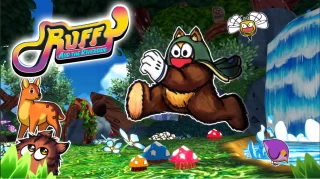As I read a recent Polygon article discussing the conscious decision by Yacht Club Games to allow its new Shovel Knight amiibo to be scanned through its packaging, and Nintendo signing off on the idea, something struck me: Nintendo is becoming a much less insular company than it used to be. In the days of the NES, when Nintendo, quite literally, ruled the video game market with an iron fist, its word was law. The puppet masters at Nintendo dictated not only every detail of how its own company would be run, but more or less established the modern framework of the video game industry.
With each successive hardware generation, and new contender to enter the ring, that framework has evolved and Nintendo’s grip on the rulebook has loosened. In the early stages of this process, it was simply a matter of sharing the spotlight, but as the competition got stiffer and the target audience grew, Nintendo shifted its approach from rule maker to rule breaker. Unwilling to bend and acclimatize to the natural evolutions of the industry, Nintendo deviated from the console manufacturer arms race with the DS, Wii, 3DS and Wii U, envisioning an untapped audience for these unique devices that wanted something different from what its competition was offering– an approach that worked, for awhile.
But with a sobering look at the Wii U’s sales numbers, it becomes clear that Nintendo has reached the end of the road with the Wii tangent, and that another change of strategy is in order. Cue the Shovel Knight amiibo.
I know, on the surface it’s something incalculably small in the grand scheme of things– a single $13 toy in a lineup of nearly a hundred– but the existence and execution of the Shovel Knight amiibo has brought into focus, for me, a Nintendo that seems much more open-minded about playing by a set of rules that it didn’t curate itself. The plastic blue burrower is one of many recent examples of Nintendo being more receptive to outside ideas, to reacting to industry shifts and to incorporating the conventional wisdom of the decades of lessons that the often-fickle video game market has imparted. In light of this, I wanted to take a closer look at some of the other reactive moves that Nintendo has been making lately.
Unprecedented partnerships
We’re seeing Nintendo lean into more substantial business partnerships these days than ever before. A great example of this is some of the most important franchises and IP that Nintendo owns being handed over to third parties for development. While there are certainly examples of this happening in isolated instances over the years, Nintendo seems more keen nowadays on leveraging the talent of studios outside of its own umbrella. Lately, some of Nintendo’s biggest names– Zelda, Super Smash Bros., Pokemon and Star Fox– have been entrusted to some very capable, but external, studios.
While it never made any excuses or apologies about what it was intended to be, Hyrule Warriors is, nevertheless, a Zelda game. Not only did Nintendo give Koei Tecmo the keys to Hyrule kingdom, but it allowed the studio to take virtually any liberty it saw fit with the characters, story and mechanics. The result feels decidedly un-Zelda, but was well received and fills a niche in the Wii U catalogue that would otherwise remain empty. Super Smash Bros. for the 3DS and Wii U is another interesting third party collaboration. While the game was still helmed closely by the series’ longtime director, Masahiro Sakurai, the development was handled largely by Bandai Namco, a developer well known for its fighting game expertise (Soulcalibur, Tekken). The team behind Tekken at Bandai Namco is also developing Pokkén Tournament, a completely different style of fighting game set in the Pokémon universe. Finally, Star Fox Zero, an upcoming title whose public showcases have left it with a lot to prove, is being co-developed with Platinum Games. The Wii U already has a strong history with Platinum, thanks to exclusives The Wonderful 101 and Bayonetta 2, but Star Fox will be its first crack at a mainline Nintendo franchise.
Looking again at Super Smash Bros., there’s plenty that can be gleaned about Nintendo’s growing relationships with other companies by simply looking at its roster of fighters. From the start, Smash Bros. 4 was riddled with legendary characters from beyond Nintendo’s stable. Sonic the Hedgehog, Pac Man, Mega Man; each of these represents agreements and licensing that once upon a time in Nintendo’s past would have seemed ridiculous. The more recent additions of characters like Ryu, Cloud Strife and Bayonetta suggest that Nintendo sees no popular gaming icon as off-limits (with the possible exceptions of Master Chief and Nathan Drake). Super Smash Bros. is a catalogue of small partnerships with developers and publishers across the industry, and a reminder that Nintendo is working hard to play nice and foster meaningful relationships with third parties.
Aside from these big-name titles and developers, Nintendo has been actively courting more independent and niche games, as well. The Nindies program illustrates Nintendo’s commitment to create a development environment that fosters up-and-coming talent in the industry, a strategy that has been paying off in spades for Sony and the PlayStation brand over the past few years. We’re also seeing Nintendo take more chances on counter-cultural games these days, like Project X Zone, Xenoblade Chronicles X, Shin Megami Tensei X Fire Emblem and Yo-Kai Watch, titles that in some other decade may never have left Japanese shores.
Mature aspirations
Back to Bayonetta 2, for a moment.
When Nintendo announced that it would be publishing Bayonetta 2 as a Wii U exclusive, there was a good amount of internet backlash. As a direct sequel to a very mature Xbox 360 and PlayStation 3 title, the Wii U seemed like the least likely platform candidate. Non-Wii U owners were understandably upset that they would be unable to play the sequel to a game they loved without buying a console that they wouldn’t otherwise own. For Nintendo, that was the appeal: Bayonetta 2 represented both an entry point for the more hardcore gaming crowd into the Nintendo ecosystem, and a chance to dispel at least some of the notion that Nintendo systems and games were strictly for children. Platinum would later go on record as saying that Bayonetta 2 flat out would not have happened without Nintendo’s intervention, making this partnership nothing but a win for gamers.
The question that this raises, for me, is whether Nintendo is actively pursuing a new identity among gamers. There is a history of exclusive, mature titles on Nintendo systems, like Resident Evil 4, No More Heroes and ZombiU, but none of them seemed so directly perpetuated by Nintendo. Bayonetta’s inclusion in Smash Bros. and the Nintendo-inspired costumes in Bayonetta 2 lend themselves to this notion, as well. With third parties hopefully considering Nintendo’s next generation of hardware, and Nintendo looking to third parties for much needed support, actively branding itself for a broader audience may actually be the right business move, even if it does feel decidedly un-Nintendo.
The inevitable leap to mobile
Much to the delight of investors and analysts, Nintendo made the announcement last spring that it would finally be joining the mobile revolution through a partnership with veteran mobile company DeNA. There’s no denying that mobile games represent a huge part of the gaming market these days, and there’s also no denying that Nintendo’s IP on mobile devices could pay off in massive ways for the company, but let’s not get ahead of ourselves. From the day Nintendo President Satoru Iwata revealed his mobile intents, he made it abundantly clear that the end game would always be Nintendo’s dedicated gaming hardware, and that its mobile experiences were gateways first and revenue streams second.
Within the next few months we will get our first taste of what he meant by this, when Miitomo (Nintendo’s first proper smartphone game) and My Nintendo (Nintendo’s new cross platform account system) launch. Part social network, part life sim, Miitomo aims to familiarize a wider audience with Nintendo’s Mii avatars and get them using Nintendo’s new unified account system without requiring them to own a Nintendo console. Miitomo is the first of five Nintendo smart phone games scheduled to launch by March of 2017, the rest of which promise to feature some of Nintendo’s more notable characters.
This year will also see the launch of Pokémon GO, a location-based smartphone game that will have users catching Pokèmon in real-world locations. Pokèmon Go represents another notable partnership, with well known mobile developer Niantic Inc., who has extensive experience with the type of game that Nintendo and The Pokémon Company are looking to make here. Pokémon has long been the bread and butter of Nintendo’s handhelds, making this partnership and mobile experiment one of the more surprising upcoming detours.
Nintendo, in real life
Nintendo isn’t limiting its new potential customers to smartphone gamers though; it’s also outlined plans to bring its characters into the real world in some interesting new ways. Taking a page from Disney’s playbook, Mario and pals will be licensed to appear in new television shows and anime, as well as a long overdue return to the big screen. We’ve seen evidence of this recently in movies like Wreck-It Ralph and Pixels, and it sounds like there’s plenty more on the way. Hollywood is working hard to ditch the bad video game movie stigma, and if it manages to win gamers over, it seems only fitting that Mario and Link should be a part of it.
Nintendo has also worked out a deal with Universal Studios to bring its unique brand of magic to its theme parks, fulfilling a dream many of us have had since we were kids. Real world attractions like this, and retail presence in shopping centers with things like the Pikachu at Build-A-Bear and some other planned ventures, will bring more non-gamers in contact with Nintendo characters. The hope is that these real world encounters will push consumers toward the new account system, apps, and eventually Nintendo’s hardware and games.
A few closing thoughts
It’s both exciting and strange to see Nintendo stepping out of its comfort zone in so many new ways. On one hand, conforming to some of the industry standards that it has actively kicked against for most of its game-making years could benefit its fans (there’s a reason that things have evolved the way they have, and that Sony and Microsoft are both currently enjoying great success). But viewed another way, it would be a shame for Nintendo to lose even the tiniest bit of its unpredictable, quirky nature. The last thing we need is three identical juggernauts in the already cramped ring together. The new leadership at Nintendo seems to be echoing the same playful sentiments we’ve been hearing for years though, so I’m going to remain optimistic that Nintendo can and will adapt where it needs to while remaining the same company that I fell in love with as a kid.
Leave a Comment






